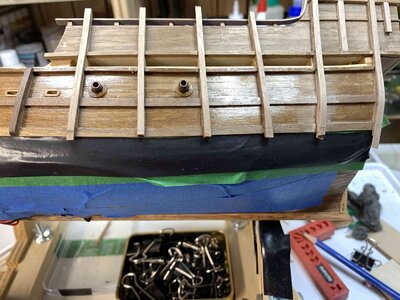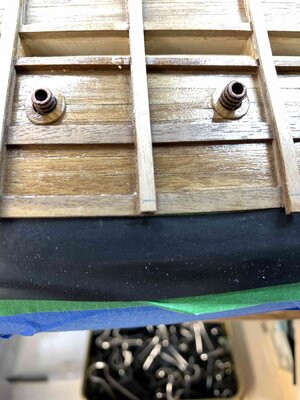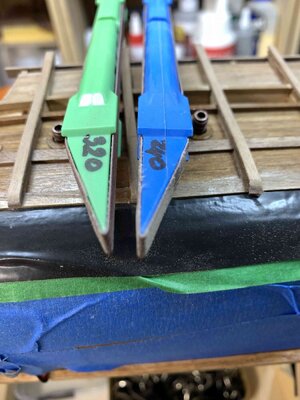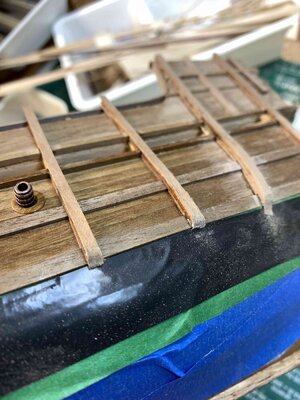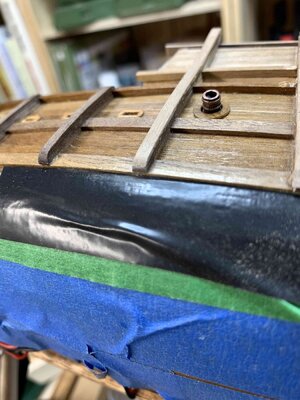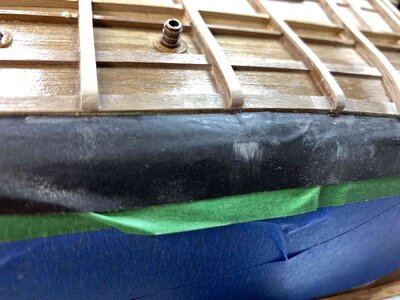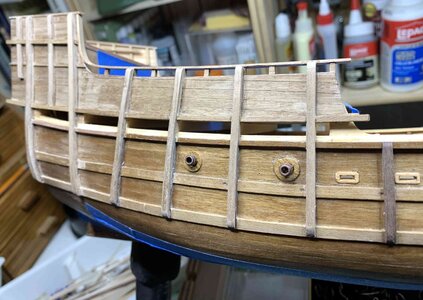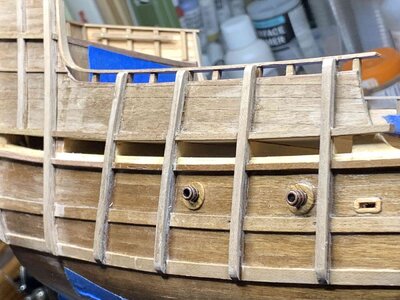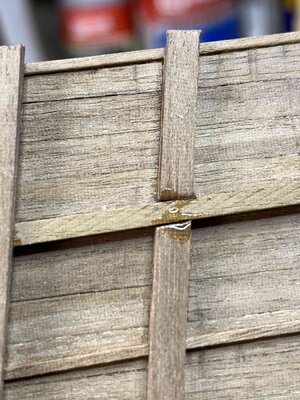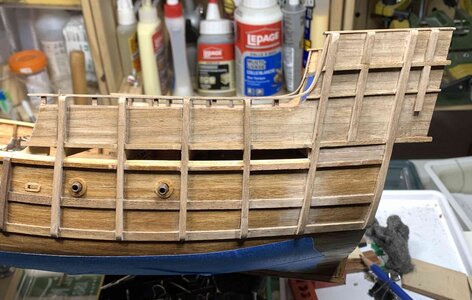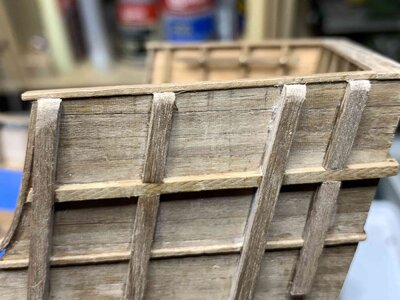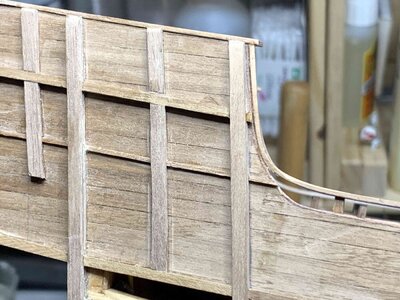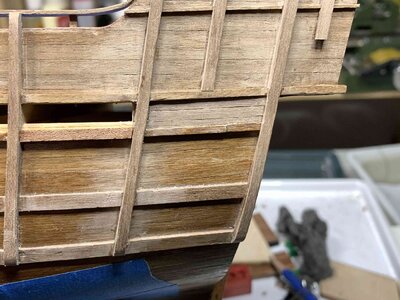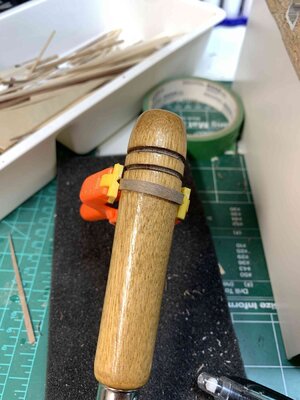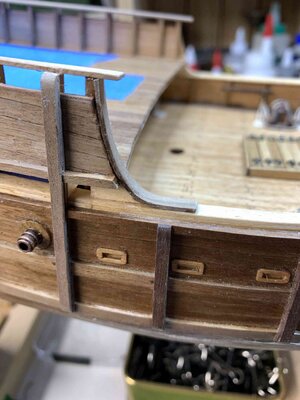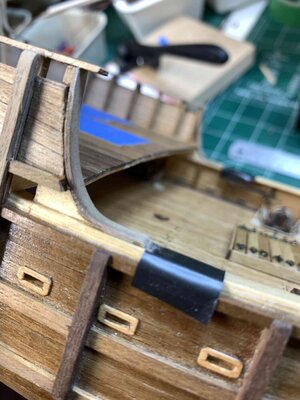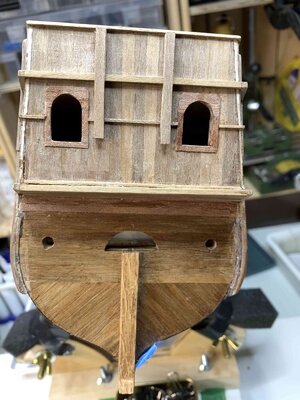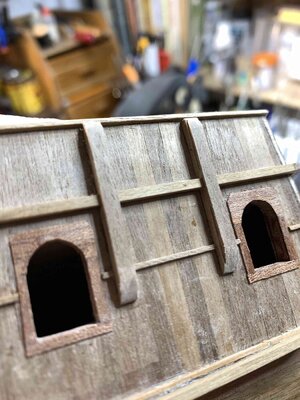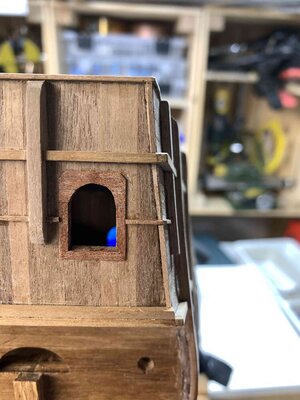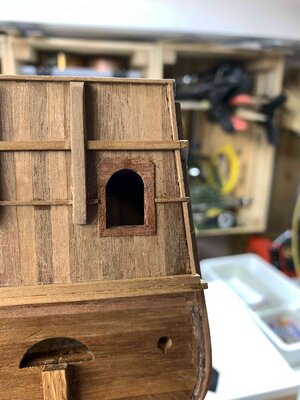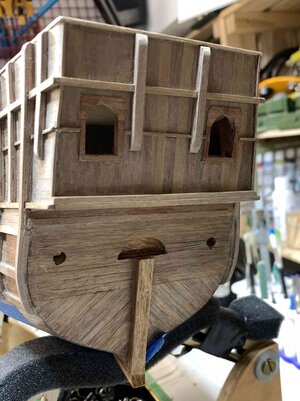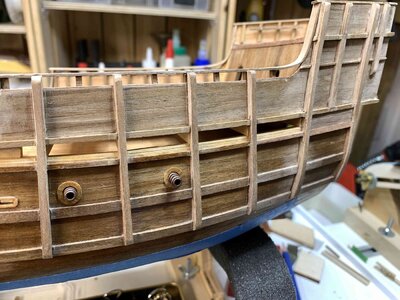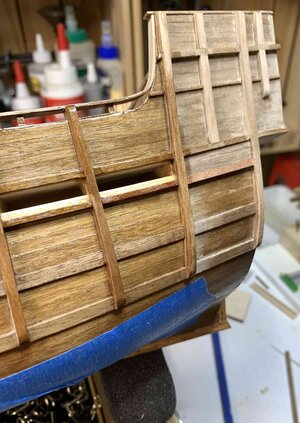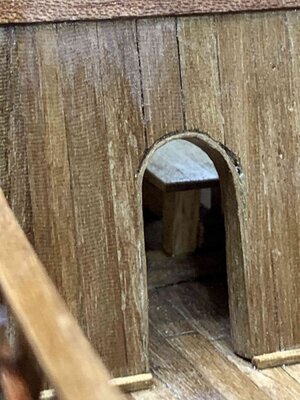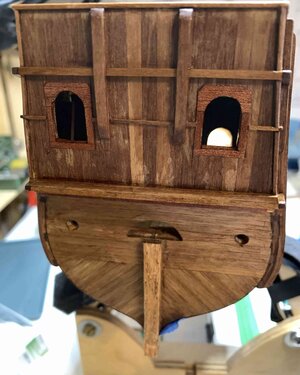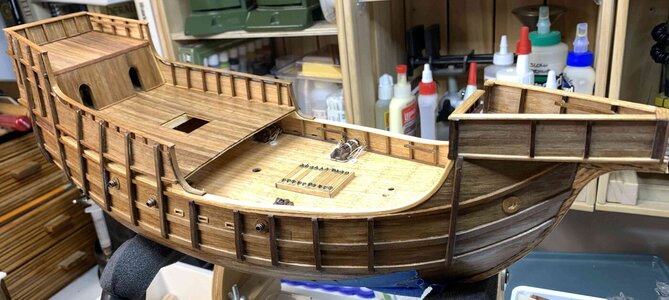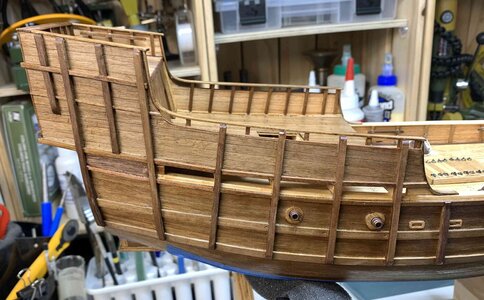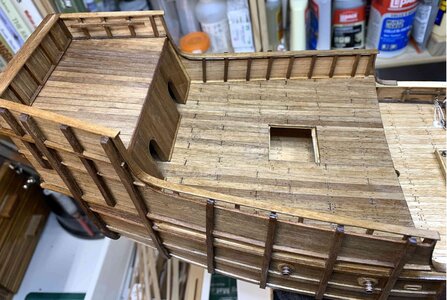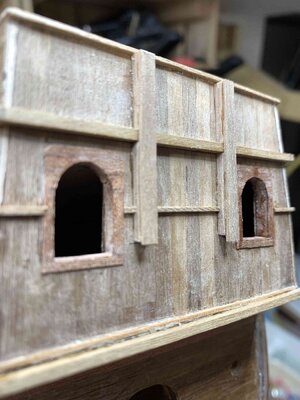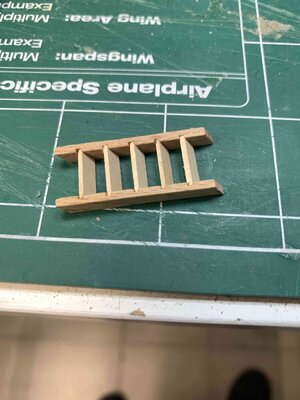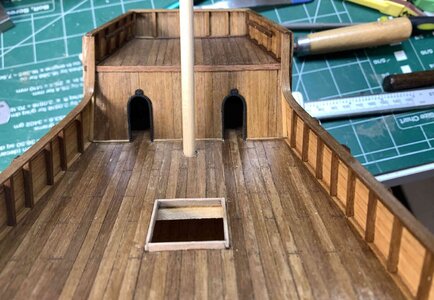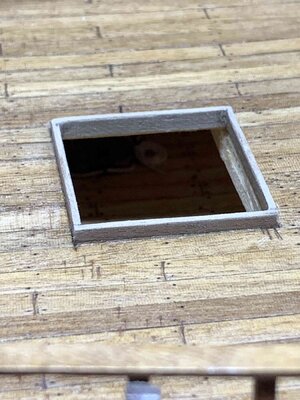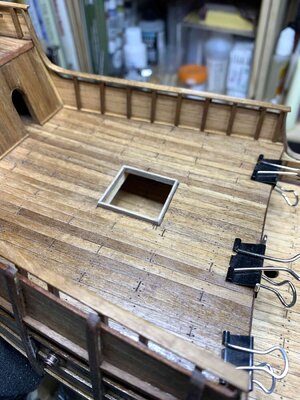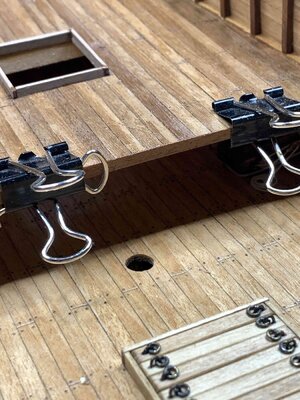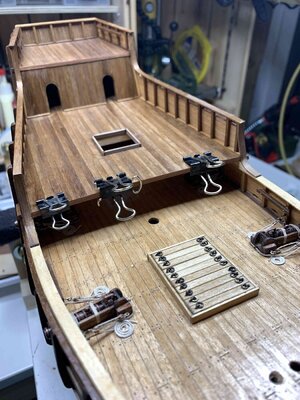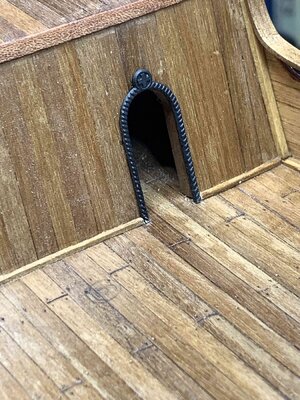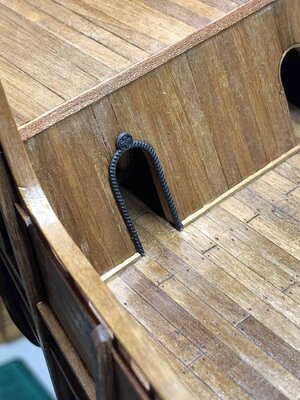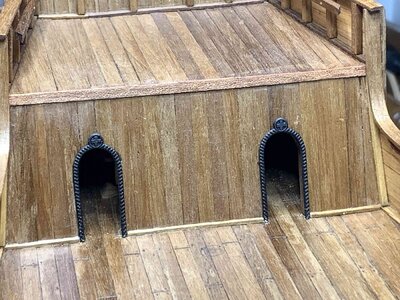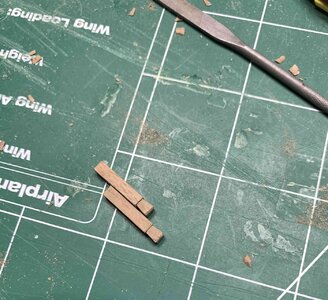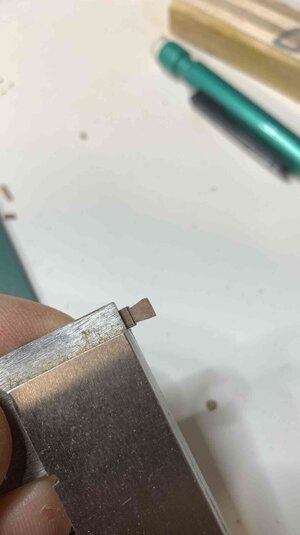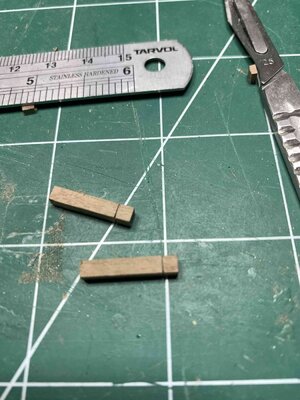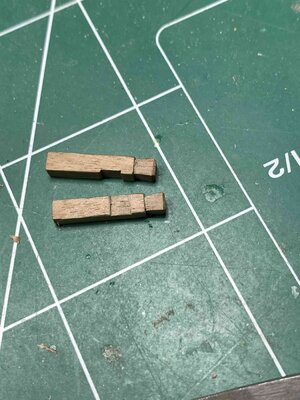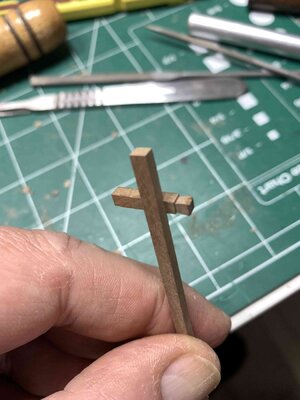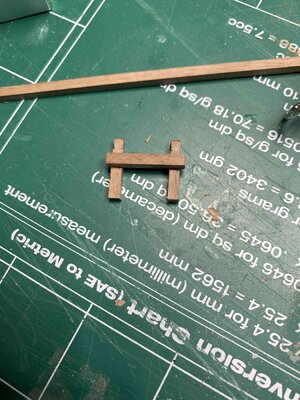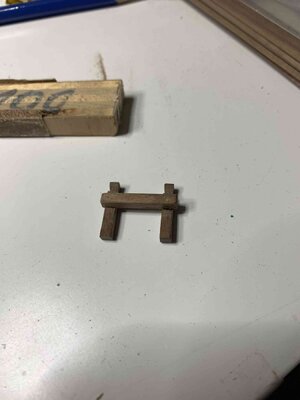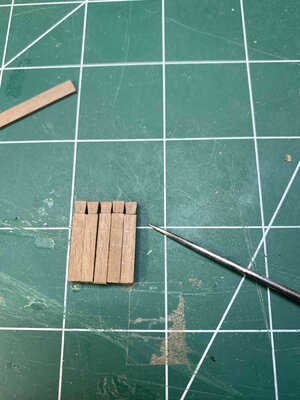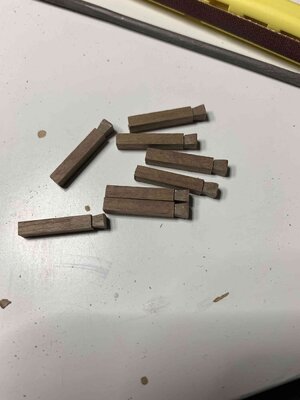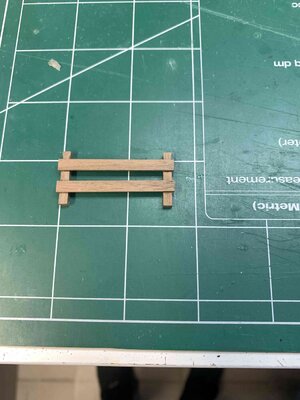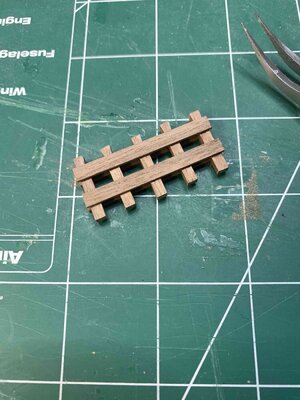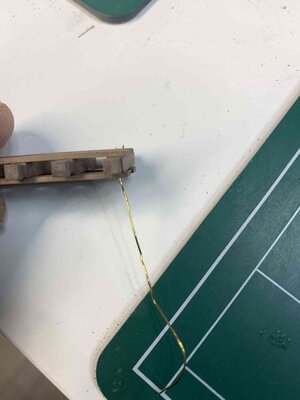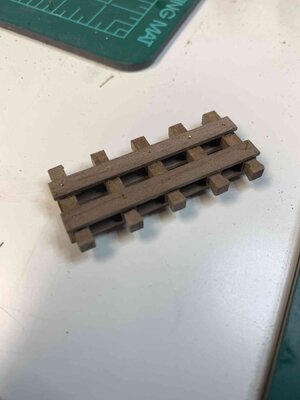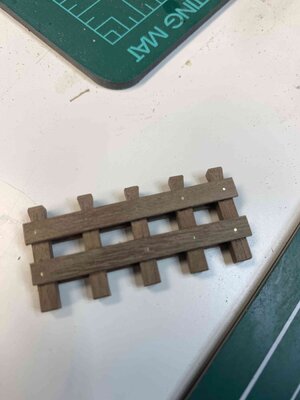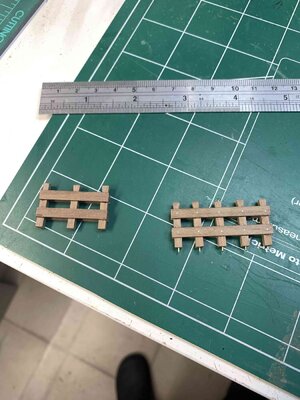Thank you ConsNZ..That is just so enviably awesome with a capital "A"
Cheers
 |
As a way to introduce our brass coins to the community, we will raffle off a free coin during the month of August. Follow link ABOVE for instructions for entering. |
 |
 |
The beloved Ships in Scale Magazine is back and charting a new course for 2026! Discover new skills, new techniques, and new inspirations in every issue. NOTE THAT OUR FIRST ISSUE WILL BE JAN/FEB 2026 |
 |
Thank you ConsNZ..That is just so enviably awesome with a capital "A"

Oh wow this ship this build is coming to life.Work on the deck continues by glueing pre-made deck side. Two layers of planking creates this part of a ship, bulwarks will come later.
View attachment 346674
While this is drying, I researched some furniture for Columbo' cabin. Started with a simple table...
View attachment 346673
View attachment 346672
... which I did not like and find out some plans for medieval furniture I think will fit nicely in this model.
View attachment 346671
Testing the hight of the table...
View attachment 346670
Then I completed one chair. Very tiny stuff... table dimensions: 15mm (H) x 15mm (W) x 34mm (L), chair 17mm (H) x 7mm (sitting part hight) x 7mm (W)...
View attachment 346669
After completing one chair, overall bulkiness of table' legs and foundation showed up so I decided to lower the leg hight and to cut the leg foundation in half, which provided a bit more dimensional balance between chair and table.
Second chair was made as well; table has leg foundation cut in half and legs were cut for approximately 3mm in hight.
View attachment 346668
Bringing important figure to the picture...
View attachment 346667
Since Portugal left World Cup earlier, guessing signore Christoforo might be a bit upset so need to speed up ship building...
View attachment 346666
A layer of golden oak stain was applied to furniture ...
View attachment 346665
And ready for assembly..
View attachment 346677
Happy modelling..
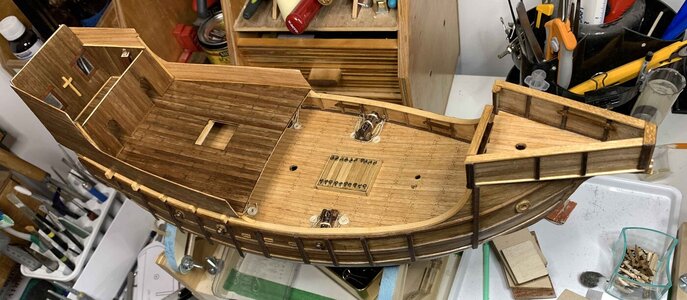
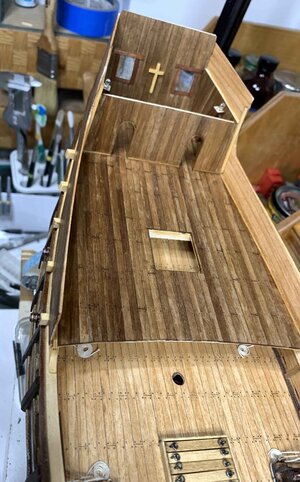
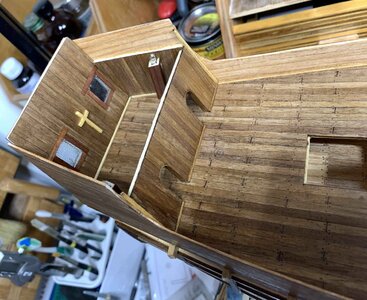
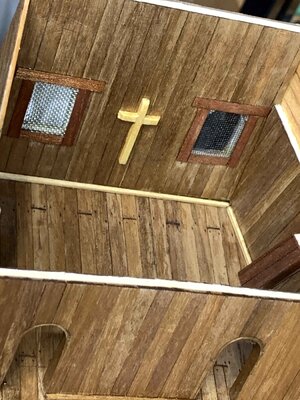
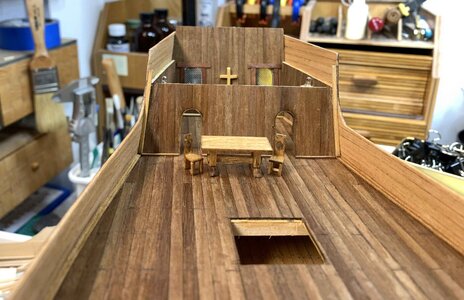
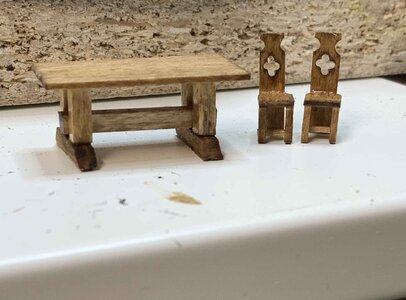
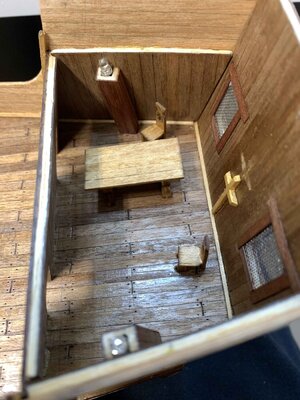
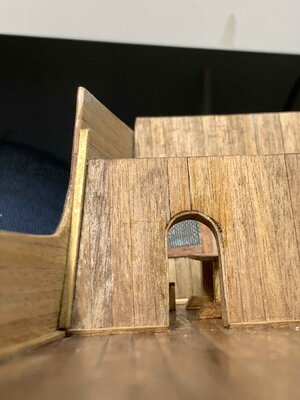
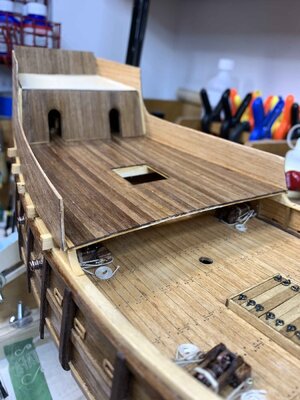
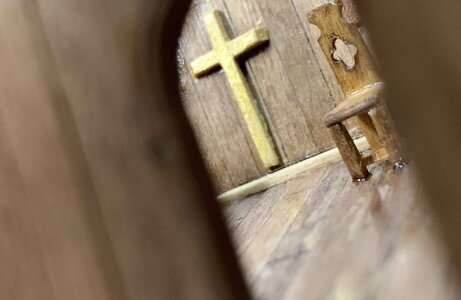
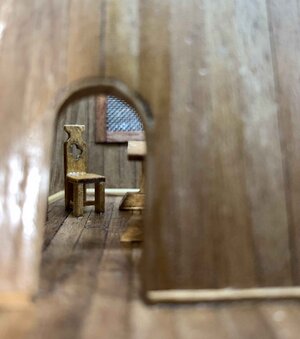
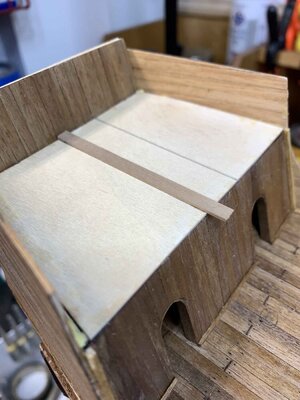
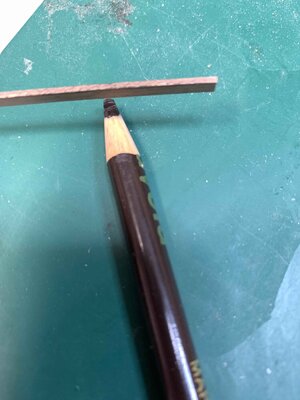
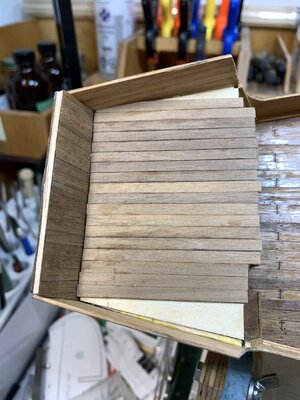
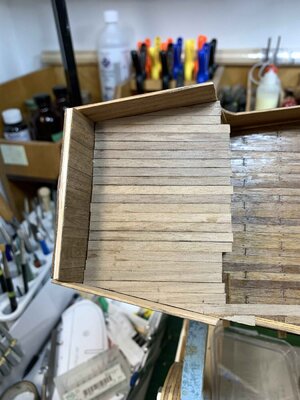
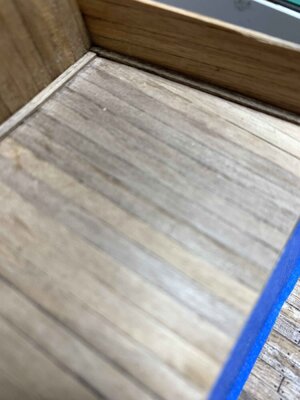
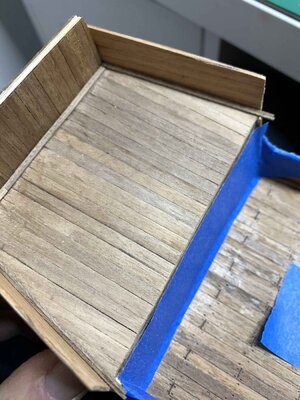
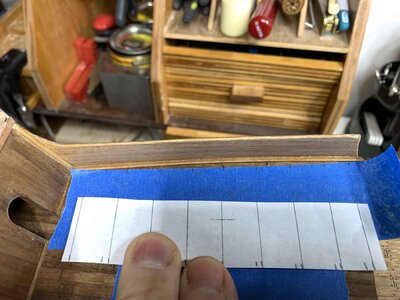
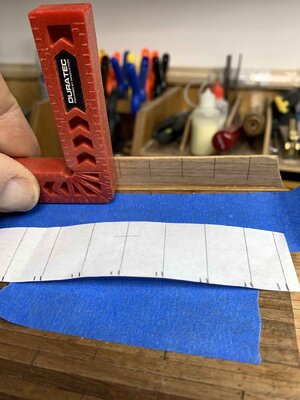
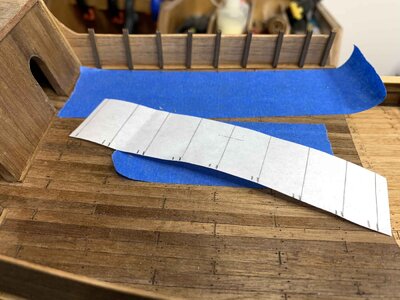
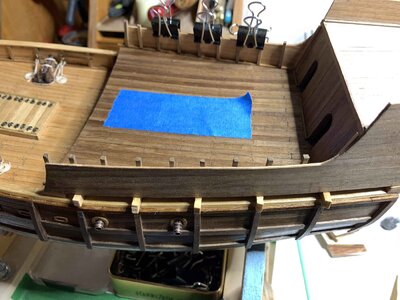
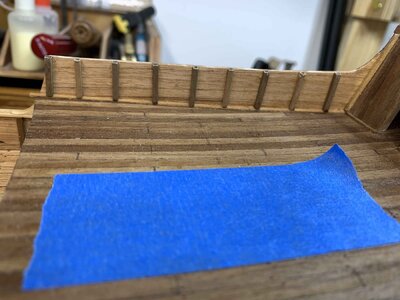
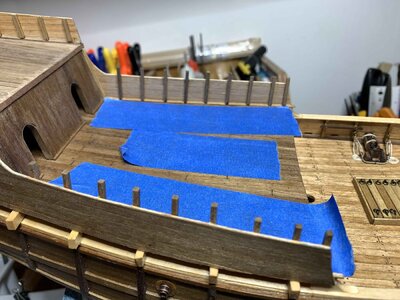
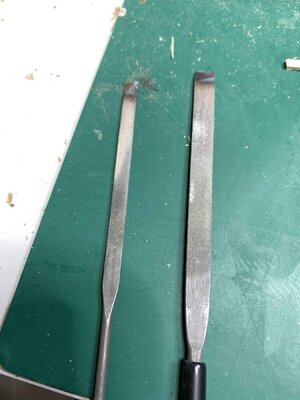
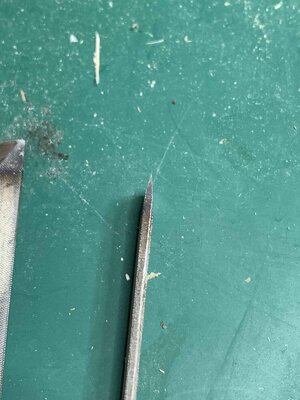
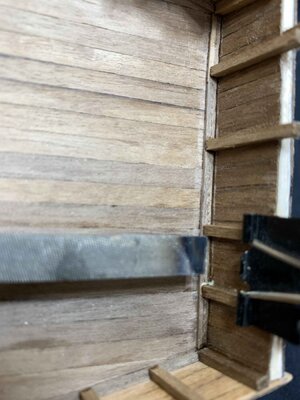
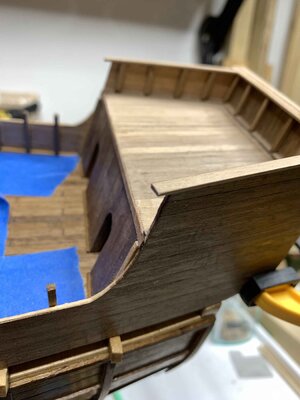
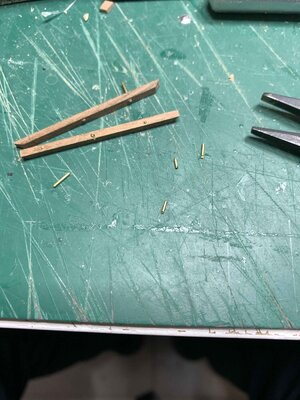
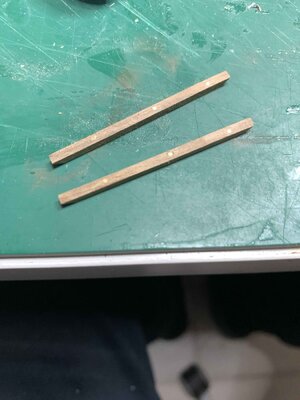
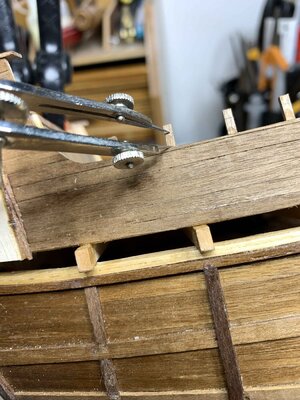
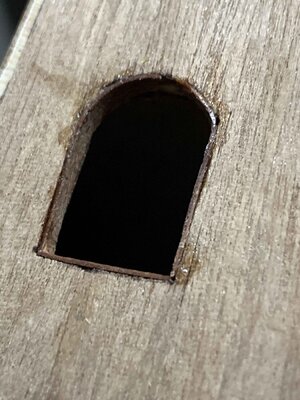
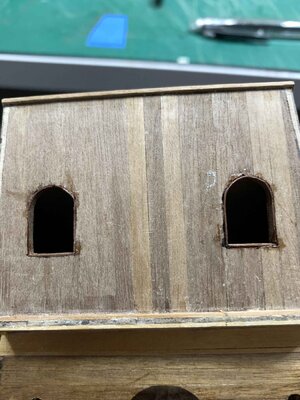
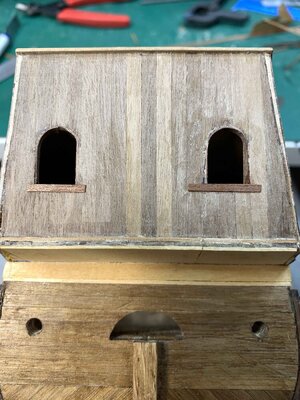
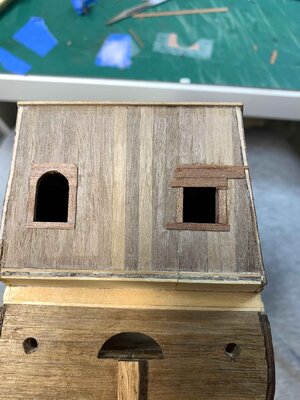
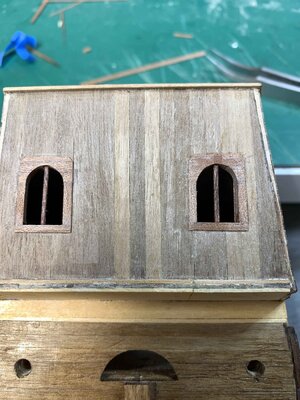
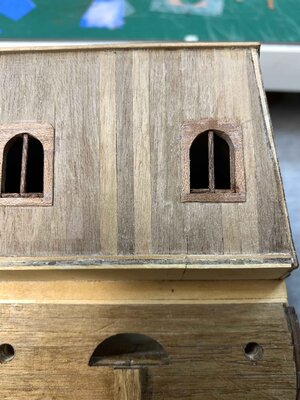
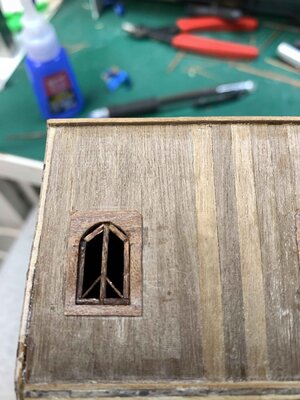
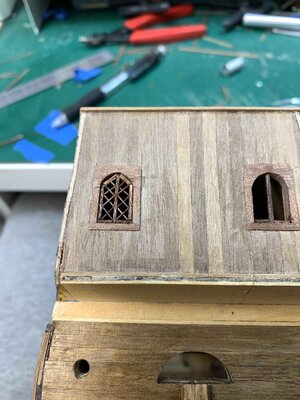
"portamanovre" -- 'Porta' can mean either door or to carry. "manovre", maneuvers. Frank48 will know an exact translated meaning for this or it's English nautical translation. Great work I'm enjoying your build as i struggle with my AL SM.The rails were added to the upper deck. Kit plan asks for 1x4mm plank to be used in this case; dimension is working fine for port and starboard sides but not for stern. 1x4mm is not wide enough to cover thickness of the fence on that side (bulwark 2x2mm + planking 1x4mm + planking 0.5x4mm, + plywood 2mm = 5.5mm), so I put 2 1x4mm and will sand the excess.
View attachment 347306
Then I worked on rigging "rack" (kit is calling it portamanovre, not sure how to translate, if you know the correct term pls let me know), but basically the part that will be used to for rigging. This is before belaying pins are introduced...
I used 3mm metal pins, flashed with the wood to simulate the way of mounting/securing rack in place...
View attachment 347305
View attachment 347304
Then I marked the place where the rail on quarter deck will be installed; 4mm empty space... No cognac this time
View attachment 347303
After that is started to work on cabin windows, replacing the wired mesh that was originally installed. Just did not like it... The idea for this was from another SOS builder who completed Santa Maria.
So, the process.. First I made a moulding to cover plywood..
View attachment 347302
View attachment 347301
Moulding excess was sanded flash with the planking. Then started to frame the windows...
View attachment 347299
View attachment 347298
Once frames are done, I sanded them and cleaned any excess wood. Then work on windows started by adding 1mm strip in the middle.
View attachment 347297
Then bottom 1mm strips were added..
View attachment 347296
And the rest of the window with grilles... I used 0.3mmx3mm planking, out of cherry for grilles, cut them into very tiny strips and spent 2 hrs mounting them
View attachment 347295
View attachment 347294
I have some ideas how to make grilles more natural looking and will try on second window. If that works better will replace the first one..
Happy modelling..
Google translates is like "rigging port", or just rigging if the whole words is translated. I have Hystoric Ship models book with nautical terms in 5 different languages but was unable to find portamanovre..."portamanovre" -- 'Porta' can mean either door or to carry. "manovre", maneuvers. Frank48 will know an exact translated meaning for this or it's English nautical translation. Great work I'm enjoying your build as i struggle with my AL SM.
No need for clarification --Portamanovre - - Maneuver door/a point to start an action/maneuver. Italian rigging "Attrezzatura; standing/running rigging. Cheers.Google translates is like "rigging port", or just rigging if the whole words is translated. I have Hystoric Ship models book with nautical terms in 5 different languages but was unable to find portamanovre
Thanks, let me know if you need any clarifications..
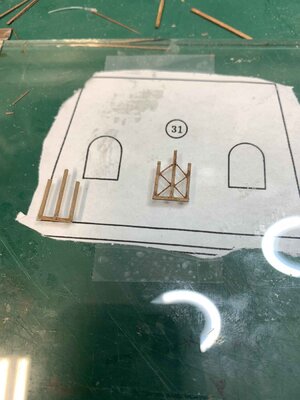
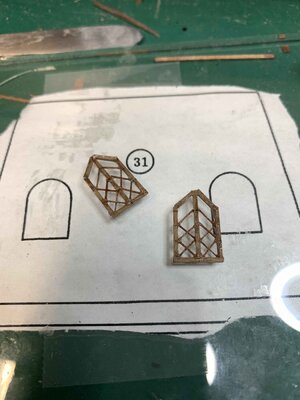
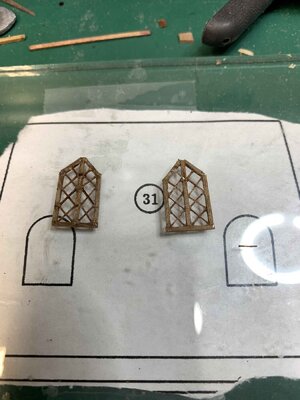
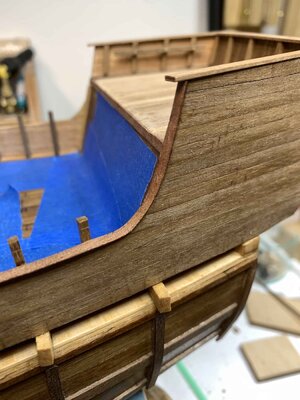
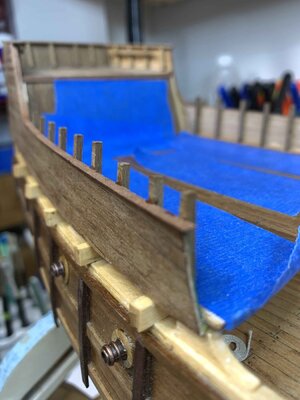
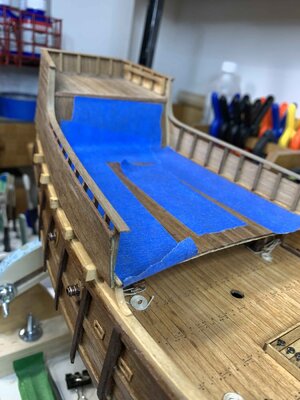
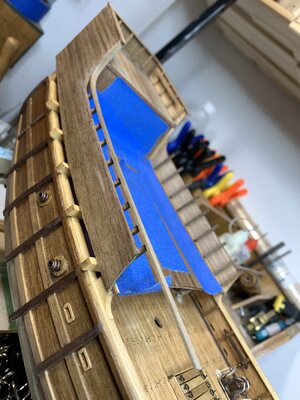
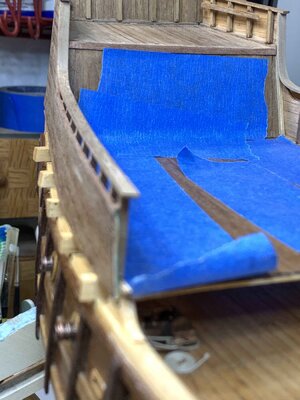
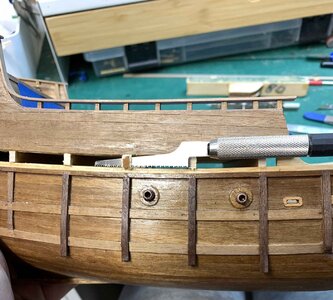
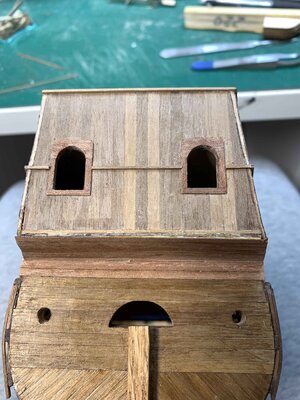
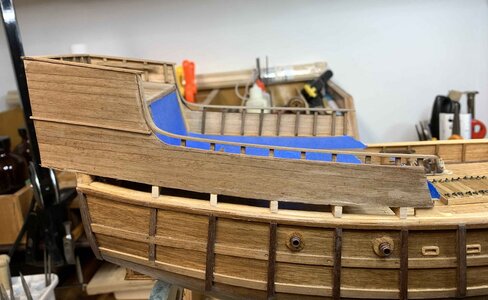
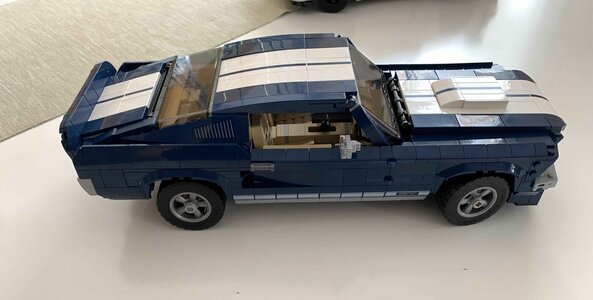
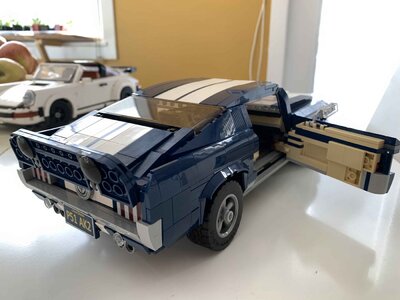
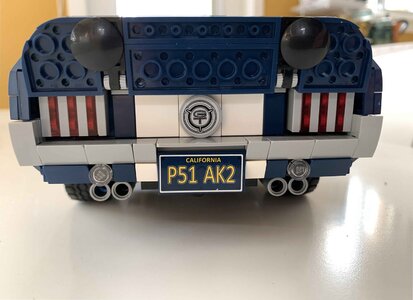
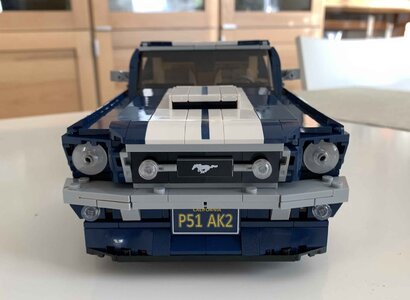
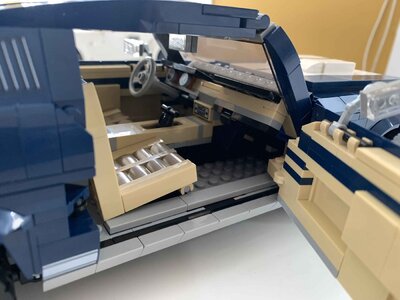
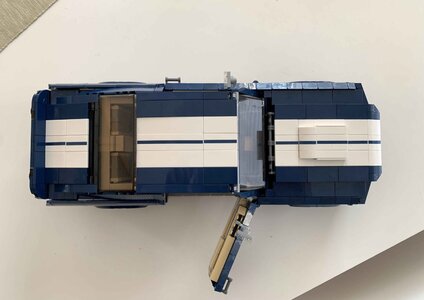
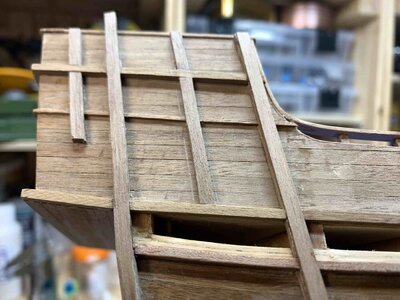
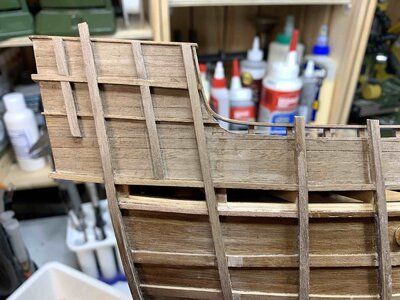
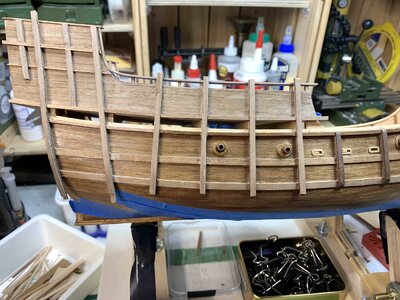
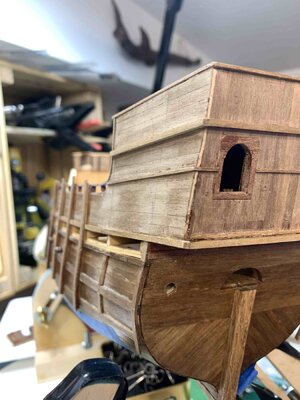
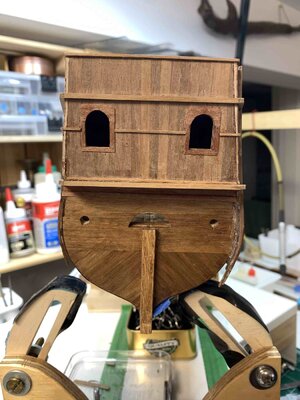
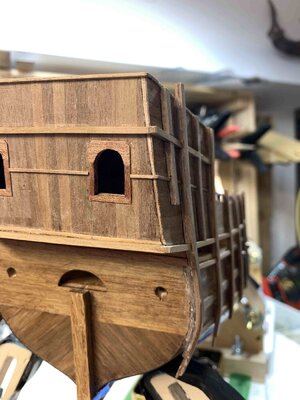
Best of health and prosperity for the coming decades.Wish you all a good health in the New Year. Everything else will follow...
Happy modelling..
